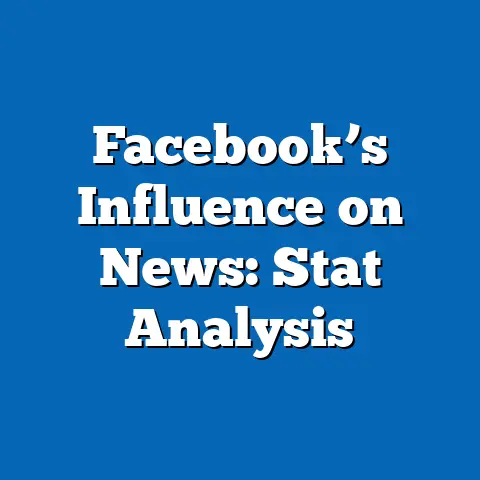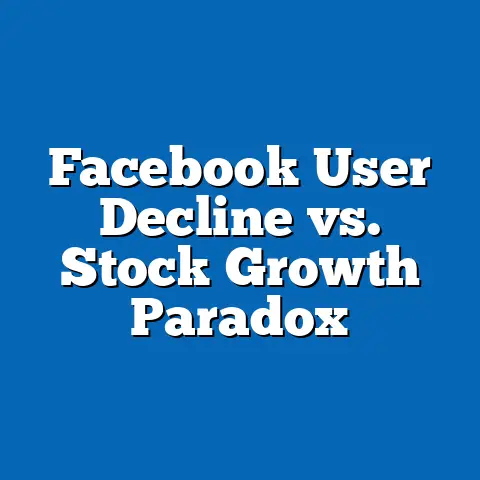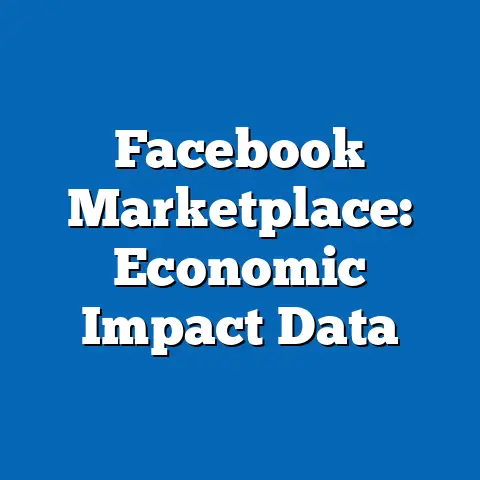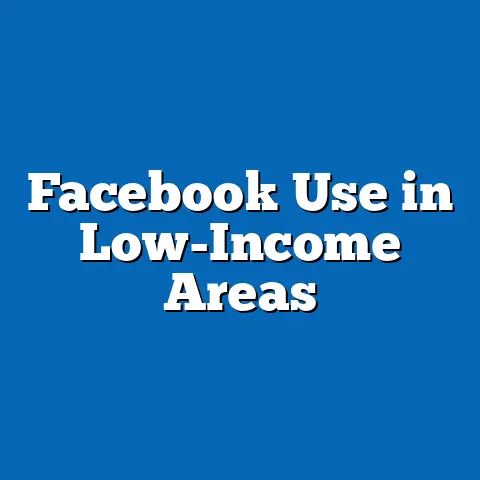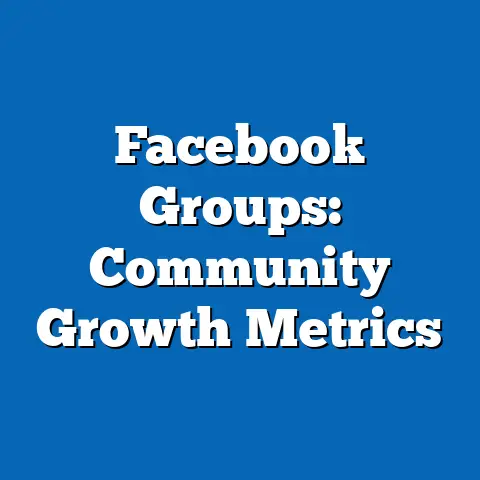Facebook Policy Effects on Ad Placement Metrics
There is a pervasive misconception that changes in Facebook’s advertising policies uniformly affect all advertisers, regardless of their industry, target audience, or campaign objectives. This oversimplification fails to account for the nuanced ways in which policy shifts—such as updates to content guidelines, privacy regulations, and targeting restrictions—differentially influence ad placement metrics like reach, impressions, click-through rates (CTR), and cost-per-click (CPC). In reality, the impact of these policies varies widely based on factors such as the advertiser’s reliance on specific data sets, the nature of their content, and the demographics they aim to engage.
Defining Ad Placement Metrics and Their Importance
Ad placement metrics are critical indicators of an advertising campaign’s effectiveness on platforms like Facebook, which, as of 2023, boasts over 2.9 billion monthly active users (Statista, 2023). These metrics include reach (the number of unique users who see an ad), impressions (the total number of times an ad is displayed), CTR (the percentage of users who click on an ad after seeing it), and CPC (the average cost incurred per click). Together, these metrics provide insights into visibility, engagement, and cost-efficiency—key determinants of a campaign’s return on investment (ROI).
Understanding the factors that influence these metrics is essential for advertisers aiming to optimize their strategies. However, external variables, such as platform policies, can significantly alter performance outcomes. This makes it imperative to analyze how specific policy changes—ranging from data privacy updates to content moderation rules—reshape the advertising landscape.
Historical Context: The Evolution of Facebook’s Advertising Policies
Facebook’s journey as an advertising platform began in 2007 with the launch of Facebook Ads, initially offering basic targeting options based on user demographics and interests. During this early phase, the platform operated with minimal restrictions, allowing advertisers broad access to user data for highly personalized campaigns. This era of lax oversight facilitated rapid growth in ad revenue, which reached $4.27 billion by 2012 (Facebook Annual Report, 2012), but it also raised concerns about user privacy and data misuse.
The turning point came in 2018 with the Cambridge Analytica scandal, where it was revealed that millions of users’ data had been improperly harvested for political advertising. This event triggered a global outcry and prompted significant policy overhauls, including stricter data usage guidelines and the introduction of the General Data Protection Regulation (GDPR) in Europe. Facebook’s response included limiting access to third-party data, enhancing user consent mechanisms, and rolling out tools like the Ad Library for greater transparency.
Subsequent years saw additional policy shifts, such as the 2020 ban on political ads in certain contexts and the 2021 implementation of Apple’s App Tracking Transparency (ATT) framework, which restricted cross-app tracking. Each of these changes aimed to balance user protection with platform profitability but introduced new challenges for advertisers reliant on granular targeting. These historical developments provide critical context for understanding the fluctuating dynamics of ad placement metrics over time.
Key Policy Changes and Their Direct Effects on Ad Placement Metrics
1. Data Privacy Regulations (2018–2023)
Post-Cambridge Analytica, Facebook’s tightened data privacy policies—aligned with GDPR and later the California Consumer Privacy Act (CCPA)—restricted advertisers’ ability to leverage detailed user data for targeting. For instance, the removal of certain demographic and behavioral targeting options led to a reported 15% drop in ad reach for small businesses in the first year of GDPR enforcement (IAB Europe, 2019). Larger advertisers with diversified strategies were less affected, highlighting a disparity in impact based on scale.
Impressions also saw a decline as ads became less relevant to users due to reduced personalization. A 2021 study by eMarketer found that average CTRs for Facebook ads fell by 8% in the EU following GDPR, as audiences were less likely to engage with less tailored content. Meanwhile, CPC rose by approximately 12% as competition for broader, less specific audiences intensified (eMarketer, 2021).
2. Apple’s App Tracking Transparency (ATT) Framework (2021)
The introduction of Apple’s ATT framework in 2021, which required user consent for cross-app tracking, dealt a significant blow to Facebook’s ad ecosystem. With over 70% of iOS users opting out of tracking (Flurry Analytics, 2021), advertisers lost access to critical data for measuring ad effectiveness and retargeting. This policy shift resulted in a reported $10 billion revenue loss for Meta (Facebook’s parent company) in 2022 (Meta Q4 Earnings Report, 2022).
For ad placement metrics, the impact was stark: reach and impressions dropped by an estimated 20% for campaigns targeting iOS users, as advertisers struggled to identify and engage their audiences (Adjust, 2022). CTRs also declined due to diminished ad relevance, while CPC spiked as advertisers bid higher to compensate for reduced visibility. Small and medium-sized enterprises (SMEs), which often lack the resources to pivot to alternative platforms or strategies, bore the brunt of these changes.
3. Content Moderation and Ad Restrictions (2019–2023)
Facebook’s increasing focus on content moderation, including bans on misleading health claims (e.g., during the COVID-19 pandemic) and political ads in specific periods, has also influenced ad placement metrics. While these policies aim to curb misinformation, they have led to ad disapprovals and reduced reach for certain industries. For example, health and wellness brands reported a 25% increase in ad rejections in 2020 due to stricter guidelines on claims related to COVID-19 treatments (WordStream, 2020).
Such restrictions often result in lower impressions and reach for affected sectors, as campaigns are either delayed or outright blocked. However, for industries unaffected by these rules, the reduced competition can lead to lower CPC and higher CTR, as available ad inventory becomes less crowded. This dichotomy underscores the uneven impact of content policies across different advertiser categories.
Comparative Analysis: Sector-Specific Impacts
The effects of Facebook’s policy changes on ad placement metrics are not uniform across industries. E-commerce businesses, heavily reliant on retargeting and personalized ads, experienced significant declines in reach and CTR following GDPR and ATT rollouts—metrics critical to their conversion-driven models. A 2022 report by Shopify noted that e-commerce advertisers saw a 30% increase in acquisition costs on Facebook post-ATT, pushing many to diversify to platforms like TikTok or Google Ads (Shopify, 2022).
Conversely, brand awareness campaigns run by large corporations, which prioritize broad reach over granular targeting, were less impacted by data restrictions. These advertisers often saw stable or even improved impressions due to reduced competition from smaller players. Industries like entertainment and gaming also adapted more readily, leveraging contextual targeting (based on content rather than user data) to maintain performance levels.
This disparity highlights a critical nuance: while policy changes may disrupt certain sectors, they can create opportunities for others. Advertisers’ ability to adapt—through creative strategies, alternative platforms, or investment in first-party data—plays a pivotal role in mitigating negative effects on ad placement metrics.
Societal Implications: Balancing Privacy and Economic Growth
The ripple effects of Facebook’s policy changes extend beyond individual advertisers to broader societal domains. On one hand, enhanced privacy protections empower users by giving them greater control over their data, addressing long-standing concerns about surveillance capitalism. Surveys indicate that 74% of global internet users support stricter data privacy laws, reflecting a societal shift toward valuing personal security over convenience (Pew Research Center, 2021).
On the other hand, these policies have economic consequences, particularly for SMEs that rely on affordable digital advertising to compete with larger players. The increased CPC and reduced reach following ATT and GDPR have strained marketing budgets, with 40% of small businesses reporting a decline in online sales in 2021 (National Federation of Independent Business, 2021). This raises questions about the accessibility of digital advertising as a tool for economic growth and innovation.
Moreover, the shift toward less personalized ads may impact user experience on social platforms. While some users welcome reduced tracking, others may find less relevant content disruptive, potentially affecting engagement rates over time. This tension between privacy and utility remains a central challenge for platforms like Facebook as they navigate evolving societal expectations.
Technological and Cultural Factors Shaping Policy Responses
Technological advancements have both necessitated and complicated Facebook’s policy changes. The rise of privacy-focused technologies, such as Apple’s ATT and Google’s planned phase-out of third-party cookies, has forced platforms to rethink data-driven advertising models. Facebook’s response—investing in machine learning for contextual targeting and promoting on-platform shops—demonstrates an attempt to adapt to a cookieless future, though with mixed results for ad placement metrics.
Culturally, growing public awareness of data misuse, fueled by high-profile scandals and media coverage, has pressured platforms to prioritize transparency and accountability. Movements like #DeleteFacebook, which gained traction post-2018, reflect a generational shift—particularly among Millennials and Gen Z—toward skepticism of Big Tech. This cultural backdrop has amplified the urgency of policy reforms, even as they disrupt traditional advertising metrics.
Workplace and Marketing Implications
For marketing professionals, Facebook’s evolving policies necessitate a reevaluation of skill sets and strategies. The diminished effectiveness of hyper-targeted ads has spurred demand for expertise in organic content creation, influencer partnerships, and cross-platform diversification. A 2023 survey by HubSpot found that 65% of marketers have shifted budgets away from Facebook toward platforms with fewer restrictions, such as TikTok and LinkedIn (HubSpot, 2023).
In the workplace, businesses must also adapt to higher advertising costs by optimizing internal processes, such as improving website conversion rates to maximize the value of reduced clicks. Larger firms may absorb these costs or pivot to alternative channels, but SMEs face a steeper challenge, potentially widening the digital divide between small and large enterprises. This dynamic could reshape competitive landscapes across industries in the coming years.
Nuances and Diversity in Impact
It is critical to acknowledge the diversity of experiences within the advertiser ecosystem when analyzing policy effects. While aggregate data suggests declines in reach and CTR post-policy changes, some advertisers—particularly those with robust first-party data or innovative approaches—have thrived. For instance, brands that invested early in email marketing and customer relationship management (CRM) systems reported minimal disruption from ATT, as they could bypass reliance on platform data (Forrester, 2022).
Geographic differences also play a role. Advertisers in the EU, subject to GDPR since 2018, have had longer to adapt compared to those in regions with delayed privacy regulations, resulting in varying levels of preparedness. Similarly, cultural attitudes toward privacy influence user opt-in rates for tracking, further complicating global ad performance metrics.
Quantitative and Qualitative Insights
Quantitative data underscores the measurable impact of policy changes on ad placement metrics. Meta’s own reports indicate a 15% year-over-year decline in ad revenue per user in regions with strict privacy laws (Meta Q3 Earnings Report, 2022). Independent studies corroborate this, with a 2022 analysis by Digital Marketing Institute finding that average CPC on Facebook rose from $0.45 in 2019 to $0.97 in 2022, a trend attributed to reduced targeting precision.
Qualitatively, interviews with marketing professionals reveal frustration over the unpredictability of policy shifts. A 2023 survey by AdAge found that 58% of advertisers feel “uncertain” about future Facebook policies, citing frequent updates and lack of clear communication as barriers to long-term planning (AdAge, 2023). This qualitative feedback highlights the human element behind the numbers, as businesses grapple with adapting to an ever-changing digital environment.
Forward-Looking Insights: Navigating an Uncertain Future
Looking ahead, the trajectory of Facebook’s advertising policies will likely be shaped by ongoing regulatory pressures, technological innovations, and shifting user expectations. Governments worldwide are ramping up scrutiny of Big Tech, with proposals like the EU’s Digital Markets Act (DMA) and potential antitrust actions in the U.S. signaling tighter controls on data usage and platform dominance. These developments could further constrain ad targeting capabilities, pushing metrics like reach and CTR into uncharted territory.
At the same time, advancements in artificial intelligence (AI) and privacy-preserving technologies, such as federated learning, offer hope for balancing personalization with user protection. Facebook’s investment in such solutions suggests a potential rebound in ad relevance, though the timeline and efficacy remain uncertain. Advertisers must prepare for continued volatility by building resilient, diversified strategies that prioritize adaptability over reliance on any single platform.
Societally, the debate over digital privacy versus economic opportunity will intensify, requiring stakeholders—platforms, advertisers, regulators, and users—to collaborate on sustainable solutions. While the future of ad placement metrics on Facebook is unclear, one certainty emerges: the era of unchecked data access is over, and the advertising industry must evolve accordingly.
Conclusion
Facebook’s policy changes over the past decade have profoundly influenced ad placement metrics, challenging the misconception that their impact is uniform across all advertisers. From data privacy regulations to content moderation and tracking restrictions, these shifts have reshaped reach, impressions, CTR, and CPC in ways that vary by industry, scale, and geography. Historical events like the Cambridge Analytica scandal and technological developments like Apple’s ATT framework provide critical context for understanding these dynamics, while societal implications highlight the tension between privacy and economic growth.
This analysis reveals that while some advertisers face significant hurdles, others find opportunities in adaptation and innovation. The diversity of experiences within the ecosystem underscores the importance of nuanced, data-driven approaches to policy analysis. As Facebook navigates an uncertain future of regulation and technological change, businesses must remain agile, policymakers must prioritize balance, and society must continue to grapple with the trade-offs of a digital economy. Only through such multifaceted engagement can the full implications of these policy effects be understood and addressed.

